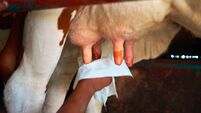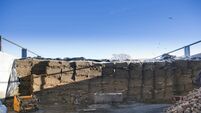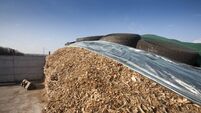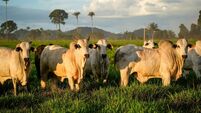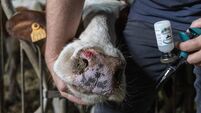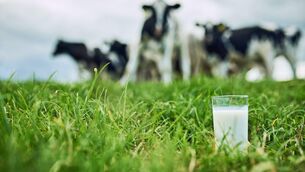Brian Reidy: Is it time to think of reseeding your ground?
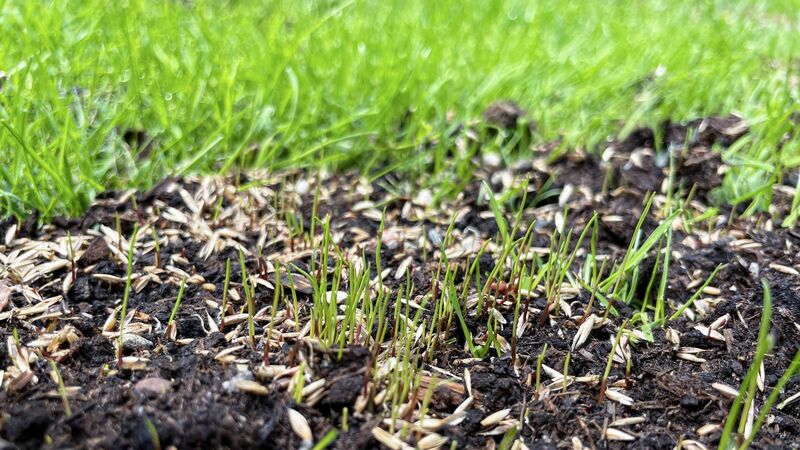
The quality and quantity of grass produced can be the biggest feed-related influence on animal performance and farm profitability.
After what turned into a mini drought in May for many, we have had very welcome rain in the few weeks, and this has given a big boost to grass growth in most areas.
However, some ground is still stressed, remains in a moisture deficit, and grass is getting very wiry and heading out quickly. I have had many herds close to the south and east coasts that have had little or no rain in the last six or seven weeks, and they are facing a significant grass deficit at present, and any grass they do have is of poor quality.
For those who have had the most welcome the increase in growth, it will hopefully encourage you to start planning for reseeding.
Depending on the method you will use, you should be starting to work on the swards to be reseeded over the coming weeks. During the recent dry spell, it was evident younger swards grew better for longer, while the old, worn-out ones slowed down significantly faster.
Irish dairy and beef producers obviously rely heavily on grazed grass and grass silage as their main forage sources. The quality and quantity of grass produced can be the biggest feed-related influence on animal performance and farm profitability.
The majority of dairy and beef farms have a proportion of swards that don’t always grow enough grass during the year, especially at the shoulders of the year. This is often due to the absence of sufficient perennial ryegrass in swards. This may be due to many factors such as sward age, pasture management, poaching, weed population and soil fertility, etc.
It is also very obvious in periods of rapid growth which paddocks are not growing grass efficiently. This will be very obvious after any mini drought when rain drives growth in new swards and old ones languish behind.
Reseeding is not cheap, so it should only be done where significant financial benefits are to be gained. Pastures deteriorate over time, and this is a natural process that cannot be avoided.
General recommendations are that the grazing ground should be reseeded every eight to 10 years, and continuous silage ground should be reseeded every five to seven years, particularly if two or more cuts are taken annually. Fertiliser is expensive and lashing it out on old/unresponsive swards is totally unviable.
Some continue to reseed by the traditional method of ploughing, while others are using direct drilling and stitching in grass, among other methods. Topsoil depth, stone population and soil structure may determine the method most appropriate.
Regardless of the method, there are important things you need to get right. A good firm seedbed needs to be created for the good establishment of the new sward. As important is getting the pH of the soil up to desirable levels. The P and K levels of soil also need to be acceptable to aid the establishment of new swards.
The benefits of reseeding include:
- Grows more grass in both shoulders of the year;
- New swards are much more responsive to nitrogen compared to old permanent pasture;
- Improved animal performance from better-quality, more palatable grass;
- Increased productivity per hectare;
- Re-growth is faster, meaning more grass grows annually;
- Better silage quality and quantity.
The type of mix you choose at reseeding should be determined by what you intend to use the sward for.
Ask yourself if the field is going to be used for mainly silage or grazing, what level your farm is stocked at, what types of soils are being reseeded.
The heading date and diploid/tetraploids proportions also need to be considered when making your decision.
Whether you should include clover in the mix or not will depend on how much nitrogen you apply and what chemicals you use for weed control.
The Nitrates Directive rules will also come into play in this regard.
Look at the recommended variety lists and ask locally what mixes are working well.
- Choose a field that is low-yielding, with a high proportion of weeds and with lower percentages of perennial rye grass;
- A soil test should be done on the fields you are reseeding;
- Spray off the field with glyphosate;
- Establish a fine, flat and firm seedbed if ploughing or disking, etc. Stitching in has become more popular and looks to be very successful where soil nutrient status is good;
- Apply fertiliser and lime as per your soil test result. Sow grass seed at 12-14kg/acre;
- The seedbed should ideally be rolled to ensure moisture is retained and the seed makes good contact with the soil;
- Weed control — it is important to hit weeds at an early stage for maximum control;
- Pest control — monitor the new crop for slugs, leatherjackets, frit fly and rabbits.
The first grazing is very important for sward establishment. Graze well and quickly to encourage tillering and increase vigour.
